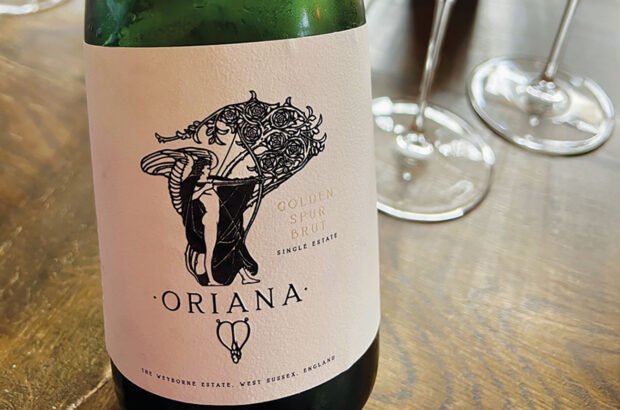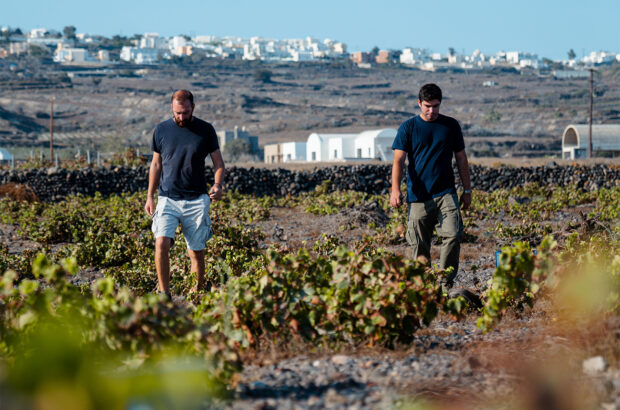Elaine Chukan Brown’s highly anticipated new book, The Wines of California, has been released this week via publisher Académie du Vin Library.
Born and raised in a Native Alaskan fishing village, a long way from the tasting rooms of Napa Valley, Elaine Chukan Brown somehow made California wine country their own.
A writer, speaker, critic and frequent catalyst for diversity and inclusion initiatives in wine, Chukan Brown’s perspective is anything but typical – precisely what makes it essential.
Chukan Brown has spent the last several years in California doing something deceptively radical: paying attention, not just to vineyards, bottles and vintages, but to the people who’ve kept the engine of this industry running – to workers whose stories have long remained just outside the frame.
In The Wines of California, Chukan Brown folds that attention into a book that maps not only the state’s wine geography but also the human terrain beneath it.
It’s less of a traditional reference book and more of a meditation on place – through its people, purpose, and possibility. With a healthy yet necessary and perhaps overdue dose of historical context, political awareness, nuance, and care, they offer a portrait of California wine that finally acknowledges all the hands that shaped it.

Credit: Elaine Chukan Brown
Ana Carolina Quintela: What made you want to write this book? What did you feel was missing from the conversation around California wines?
Elaine Chukan Brown: Interestingly, there hasn’t been a book meant to be comprehensive about California wine in quite a while. So I kept thinking, what about California would need to be written if we’re going to do one now?
So I decided that for it to be worth writing a book in the middle of the internet age, the book had to present the complete information, a comprehensive perspective, as this kind of book is meant to, that gives a depth of perspective, that you can’t simply search online.
So I decided that I had to focus on two audiences: people who have been part of wine all along and those who are coming into wine now, but don’t necessarily recognise themselves in the obvious wine-focused books and magazines.
I wanted to write a genuine perspective that shows that people from all over the world and a lot of different backgrounds have been here the whole time and are actually fundamental to the success of wine.
ACQ: The book talks a lot about the labour behind the wine industry. Can you explain how the labour force has evolved over time, and why workers are so often dismissed?
ECB: Since the beginning of the 1900s, the US has depended on inexpensive farm labour across all labour cultures. That’s simply factually true.
In the 1930s, Roosevelt passed a labour rights bill to allow workers to form unions in response to a series of significant strikes happening all over the country, in different industries. However, the agricultural industry in California lobbied to keep this activity excluded from that bill to maintain low-wage labour.
Then, in the 1960s, the farmworker movement in California began to take hold. Despite earlier strikes, it wasn’t until the 1970s, with Dolores Huerta after decades of work, that farmworkers gained real rights with the Agricultural Labor Relations Act.
Even with these changes, the reality is that farm labourers are still underappreciated. So I think there’s been this long-standing perception that we need inexpensive labour, primarily for agriculture.
The US has consistently created labour crises, every 15 to 20 years since the late 1800s, by excluding those who were once relied upon for agriculture – immigrants, mostly – and the wine industry hasn’t been immune to this. We tend to cycle through these anti-immigrant measures that ultimately lead to labour shortages, which then trigger an economic crisis. It’s a repeated cycle that we seem to fail to learn from.
Speaking more broadly, part of why I wrote the book in the way that I did was because there are so many things we’re afraid of right now in the wine industry, but it’s like, we have consistently problem-solved these different things and have moved forward.
One of the key lessons is as simple as acknowledging that we need each other to succeed. People in the industry rarely interact with farmworkers, so it’s easy to overlook their importance. Until there’s more collaboration and genuine recognition of the workers, things won’t change.

Author Elaine Chukan Brown and Sonoma correspondent Ana Carolina Quintela. Credit: Katie Canfield
ACQ: What defines California’s wine identity, and how has it evolved over time?
ECB: I think California’s wine identity is still evolving and difficult to pin down. I think that even as traditional as the wine industry is, part of what California brings is this fresh verve, a willingness to do things that aren’t supposed to work.
Planting varieties in places where they don’t traditionally grow is a prime example of that – in places that don’t resemble where they originally grew at all. And yet you get a good wine from it. As simple as that sounds, much of the world doesn’t do that.
That kind of experimentation and innovation is what California engages in pretty regularly. There’s a kind of spirit of innovation that I think really defines California’s audacity.
ACQ: Speaking of which, you mention in the book how varieties like Zinfandel, Chardonnay and Cabernet have evolved into something like new genres of wine in California. Can you elaborate?
ECB: Yes! Now, Albariño, for instance, isn’t typically grown along the ocean shore here, and I don’t think it would even thrive in California’s coastal climate, but we have grown in such a different way.
We’re finding that there are varieties like Carignan working here. It’s fascinating because we also have varieties like Fiano, and you wonder, ‘Why on earth do we have these here?’
Yet, we keep discovering that they work. California has 130 varieties planted commercially, and it’s this kind of experimentation that makes the region unique.
ACQ: What key historical moments have helped establish California wine globally?
ECB: California’s been the largest producer basically since we first brought wine grapes in. You know, it’s just that during Prohibition, the volume was just grapes, and other people may have turned it into wine. But interestingly, the insurmountable challenge of Prohibition actually expanded grape acreage in California.
It did break our winemaking heritage, but it actually expanded vineyard acreage, which weirdly set us up to then grow and become the producer we are today.
In the 1980s, there was a considerable health movement and a significant downturn in the wine market as people started avoiding alcohol.
But then, the French Paradox aired on 60 Minutes, and suddenly wine was seen as something that could be good for your health. This shifted the narrative around wine and gave it a considerable boost.
The 2008 financial crisis had a significant impact. It made it harder for people to afford land, including vineyard land, and forced the industry to rethink its model.
Immediately after that, we had two of the hardest weather years in the state’s history, which affected yields and forced a shift in wine style to lighter and more restrained. That period opened the door to a new generation of smaller wineries and a fresh approach to wine that became very influential in the industry.
The COVID-19 crisis, along with the 2008 financial crisis, created a space where the industry had to adapt. These events have really shaped the direction of California wine, pushing it to be more innovative and responsive to the shifts in consumer habits.
Elaine Chukan Brown’s book, The Wines of California, is available at Academie du Vin Library.







